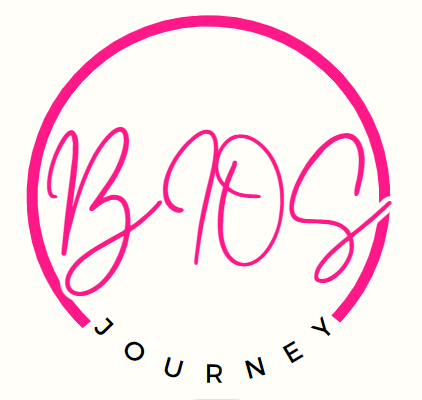In today’s fast-paced digital age, creating exceptional software isn’t just about writing code; it’s about crafting code that is efficient, reliable, and adaptable to change. This process is known as CodeCraft, the practice of writing high-quality code that balances functionality with elegance, readability, and maintainability. One of the key strategies to mastering CodeCraft is incorporating Agile methodologies, a flexible and collaborative approach to software development.
Understanding Agile: A Framework for Adaptability
Agile methodologies have transformed how teams develop software by promoting adaptability, collaboration, and customer-focused approaches. Unlike traditional, linear development models, Agile encourages iterative progress and continuous improvement. The Agile Manifesto, created in 2001, outlines four core values that guide Agile development:
- Individuals and Interactions Over Processes and Tools
This value emphasizes the importance of team collaboration and communication, which is crucial for creating a cohesive codebase. - Working Software Over Comprehensive Documentation
Agile values functional software as the primary indicator of progress, focusing on results rather than exhaustive documentation. - Customer Collaboration Over Contract Negotiation
Agile fosters ongoing collaboration with customers to ensure that the software meets real-world needs. - Responding to Change Over Following a Plan
Agile teams adapt to changes in requirements, enabling flexibility throughout the development process.
These values lay the foundation for CodeCraft within Agile, as they focus on quality, teamwork, and responsiveness to evolving requirements.
Please Visit our other article: https://biosjourney.com/interior-designs/mytyles-wall-and-f/
CodeCraft: Where Craftsmanship Meets Agile Methodologies
CodeCraft is the art of approaching software development with the same dedication and precision as an artisan would with their craft. Agile and CodeCraft complement each other by promoting continuous learning, adaptability, and quality. Here are several key Agile strategies that enhance the practice of CodeCraft, helping developers deliver high-quality, functional software that meets customer needs.
1. Test-Driven Development (TDD): Writing Code with Purpose
Test-Driven Development (TDD) is an essential technique in CodeCraft. In TDD, developers write tests before coding to ensure that each feature is verified from the outset. This approach results in modular, testable, and reliable code that is easier to maintain over time.
Agile Integration: Teams can incorporate TDD into every sprint, aligning with CodeCraft principles by ensuring that every function is covered by tests. This approach allows for continuous code quality assurance, reducing bugs and ensuring a robust product.
2. Refactoring: Continuous Code Improvement
Refactoring is the practice of refining code without altering its external behavior. In CodeCraft, refactoring ensures the codebase remains clean, efficient, and adaptable as the project grows. This process prevents the accumulation of technical debt, or the extra work caused by shortcuts taken in coding.
Agile Integration: Refactoring should be scheduled regularly within each sprint, enabling teams to continuously improve the code and address technical debt early. By keeping the code organized and efficient, developers can avoid potential issues that could slow down development in the future.
3. Prioritizing Code Readability and Maintainability
Readable code is essential for maintaining high-quality software, especially as teams grow and change. In CodeCraft, writing readable code means adhering to consistent coding standards, writing clear comments, and avoiding overly complex logic.
Agile Integration: Code readability should be part of the Definition of Done (DoD) in every sprint, ensuring that each piece of code meets readability standards before moving on. This approach not only enhances team productivity but also simplifies onboarding for new team members.
4. Automation: Boosting Efficiency in Agile Workflows
Agile thrives on efficiency, and automation helps streamline repetitive tasks such as testing and deployment. Continuous Integration (CI) and Continuous Delivery (CD) pipelines are essential to Agile workflows, allowing teams to automate testing, building, and deploying software, which helps detect issues early.
Agile Integration: By automating testing and deployment, Agile teams ensure that each sprint includes automated solutions that maintain high code quality, freeing developers to focus on crafting exceptional software.
5. Continuous Learning: Embracing a Culture of Growth
CodeCraft requires a mindset of continuous learning and improvement. Staying updated with new tools, languages, and coding best practices is essential for developers looking to hone their craft. Knowledge-sharing practices like pair programming and code reviews encourage collaboration and improve overall team knowledge.
Agile Integration: Agile encourages ongoing improvement, both at the team and individual levels. Regular retrospectives, technical discussions, and code reviews help teams learn from each sprint and adapt to new challenges, supporting the continuous growth mindset of CodeCraft.
6. Effective Collaboration: Building Software as a Team
Collaboration is central to both Agile and CodeCraft. Pair programming, where two developers work together on the same code, promotes knowledge sharing and error prevention. This collaborative approach allows for real-time feedback and collective problem-solving, which is essential for high-quality code.
Agile Integration: Pair programming and regular feedback sessions foster a collaborative environment, ensuring that the entire team is working towards the same goal. Open communication and teamwork are crucial in maintaining CodeCraft principles within Agile projects.
Balancing Speed and Quality: Agile Strategies for CodeCraft Excellence
One challenge in Agile development is balancing the need for fast delivery with the quality standards of CodeCraft. Agile addresses this by promoting incremental progress, allowing teams to release a working product early and refine it over time. This approach enables developers to uphold craftsmanship without compromising on delivery timelines.
Agile encourages flexibility in task prioritization, which helps teams focus on high-impact features first while refining and improving the software incrementally.
Tools to Enhance CodeCraft in Agile Environments
Using the right tools can greatly enhance Agile CodeCraft practices. Here are some essential tools:
- Version Control (e.g., Git): Tracks code changes, facilitating collaboration and ensuring a robust codebase.
- Project Management Tools (e.g., Jira, Trello): Helps teams manage tasks, track progress, and maintain project visibility.
- Testing Frameworks (e.g., JUnit, Selenium): Automates testing, ensuring code quality throughout development.
These tools support efficient collaboration, automated testing, and effective project management, making Agile CodeCraft more streamlined and productive.
Managing Technical Debt: Maintaining a Healthy Codebase
Technical debt refers to the future work caused by coding shortcuts or quick fixes. In Agile CodeCraft, managing technical debt is crucial to avoid challenges in scaling and maintaining software. Regular refactoring, code reviews, and attention to coding standards help reduce technical debt over time.
Agile Integration: By setting aside time for refactoring and addressing technical debt in each sprint, teams can maintain a healthy codebase and prevent the accumulation of issues that could impede future development.
Conclusion
Combining Agile with CodeCraft offers a comprehensive approach to creating high-quality, functional, and adaptable software. By embracing practices such as TDD, regular refactoring, automation, and continuous learning, Agile teams can deliver software that meets current needs and adapts seamlessly to future changes. Agile CodeCraft is not just about meeting deadlines or writing code—it’s about fostering a culture of quality, collaboration, and craftsmanship that drives lasting value in software development.
FAQ’s About
1. What is CodeCraft?
CodeCraft is the art of writing high-quality, maintainable code that’s efficient and elegant.
2. Why use Agile in CodeCraft?
Agile allows teams to adapt quickly, deliver regularly, and keep improving code quality, which is perfect for crafting excellent software.
3. What are the core values of Agile?
Agile values:
- People and collaboration
- Working software over heavy documentation



